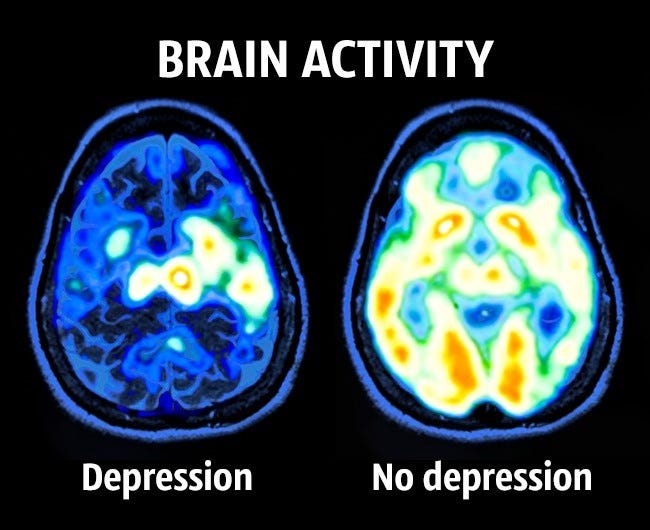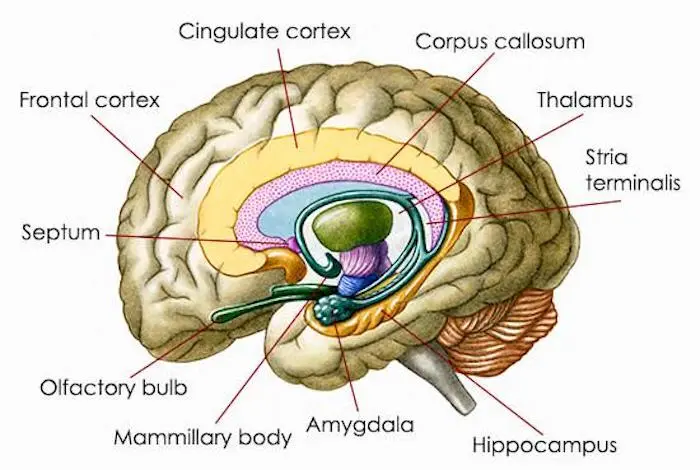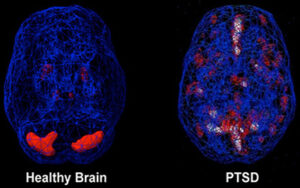Domestic abuse has always been a topic that is difficult for people to talk about and often frowned upon when it is talked about. Domestic abuse can range from physical abuse to emotional abuse to mental abuse. It causes feelings of guilt, hurt, shame, embarrassment, and much more to arise. It is a topic that is uncomfortable to hear about, and very often, people don’t know what is the correct way to act or respond after hearing someone’s survival story. According to the National Coalition Against Domestic Violence, “On average, 20 people per minute are physically abused by an intimate partner in the United States”1. One of the most common questions asked is, “Why doesn’t the person experiencing the abuse just leave?”, but it is much easier said than done. Though it is not listed in the statistic above, domestic abuse isn’t just limited to adults and their intimate partners, children can also experience it, people who aren’t intimate with another person can experience it, there is no specific set of characteristics that determine whether or not a person can experience domestic abuse. In any of the cases, sometimes a victim can’t leave because they are too young to understand the severity of the situation, they don’t have anybody to help them out of their position, or in most cases, the person being abused has been manipulated into staying in the relationship. Majority of people don’t realize how serious the effects of being exposed to domestic violence are. While somebody is in an abusive relationship and even after they’ve freed themselves of the relationship, individuals, more often than not, develop mental, personality, and emotional disorders. Those disorders vary from person to person, however the most common are major depressive disorder, post-traumatic stress disorder, and generalized anxiety disorder. Each of these disorders affect different parts of the brain and I believe that domestic violence causes these disorders to make permanent changes in the way the brain works in domestic abuse survivors. While there are treatments for each disorder named, a survivor will never be the same person they were prior to being abused because their brain has been altered by the actions and words of their abusers.
Domestic abuse is not a subject that our society chooses to openly discuss. When domestic abuse does occur, in most cases, it is dismissed and only paid attention to when it is too late to help the victim. According to National Coalition Against Domestic Violence, “1 in 4 women and 1 in 9 men experience severe intimate partner physical violence, intimate partner contact sexual violence, and/or intimate partner stalking with impacts such as injury, fearfulness, post-traumatic stress disorder, use of victim services, contraction of sexually transmitted diseases, etc”2. Domestic violence is inclusive of many different actions: slapping, shoving, manipulation, name-calling, and rape, to name a few. Domestic violence is not just limited to the severe cases that arise, but all cases, whether reported or not – emotional, mental, and physical. The response formed to any form of abuse is based solely on the mindset of the victim. A victim may triumph and overcome a very difficult situation, whereas another victim could be subject to the pain and allow it to take over their mind. It is ultimately up to the victim to decide how to cope with their trauma. However, if the victim develops mental health disorders, they cannot be blamed for the response their mind and body have to the trauma they’ve experienced. Based on statistics from the American Psychiatric Association, “Approximately 20% of IPV [intimate partner violence] survivors reported experiencing a new onset of psychiatric disorders such as major depressive disorder (MDD), generalized anxiety disorder (GAD), and posttraumatic stress disorder (PTSD) and a wide range of substance use disorders”3. As stated earlier, if 20 people are experiencing abuse per minute, that means just a little over 10,500,000 people are being abused each year. If 20% of survivors are developing mental health disorders, that means over 2 million people are dealing with the aftermath left behind by their abuser every year.
Major depressive disorder is one of the three disorders highlighted in the effects of domestic abuse. Based on an article written by Mayo Clinic, major depressive disorder can be defined as, “… a mood disorder that causes a persistent feeling of sadness and loss of interest”4. Most individuals will express depression in different forms – but it is generally characterized by feelings of worthlessness, shame, suicidal thoughts, difficulty completing simple tasks, weight gain/loss, and isolation. Statistics on how many individuals develop major depressive disorder after or during domestic abuse are difficult to obtain due to cases being unreported and domestic violence being focused mainly on women. However, the common denominator is major depressive disorder affects the same parts of the brain in both men and women. Based on an article by Harvard Health Publishing, “Areas that play a significant role in depression are the amygdala, the thalamus, and the hippocampus”5. As seen in figure 1, these areas of the brain are being affected more in the individual with depression. The amygdala plays a main role in memory, emotion, and response to stress and fear. The thalamus functions in body movement and the five senses, except smell. Lastly, the hippocampus is important to learning and memory. These three parts of the brain work together in depression. Once the hippocampus has become accustomed to the patterns of domestic abuse, the thalamus and amygdala work together to respond to the abuse. The response could be in the form of self-defense, expressing emotions such as being angry and crying, or staying silent.

The image above indicates that the highlighted areas of the brain (amygdala, thalamus, and hippocampus) are the most active in the brain whereas an individual without depression uses all areas of their brain and is not focused on specific areas.
According to an article written by the Harvard Health Publishing, people with depression are said to have smaller hippocampuses than those without depression and since the amygdala is used through feelings of fear and stress, it actually enlarges7. One would typically be joyful to know that they are using a certain part of their brain more and that it has enlarged. In this case, it has the opposite effect, an individual would not be joyful to find that their pain and sorrow is reflected in the way their brain is structured and functions. This is the effect that domestic violence has on the brain through major depressive disorder.
The next mental health disorder that can result from domestic abuse is named generalized anxiety disorder. Generalized anxiety disorder can be defined as, “… a persistent feeling of anxiety or dread that interferes with how you live your life”8. Just like with major depressive disorder, many studies are difficult to conduct because there are many different factors to be considered. Therefore, there aren’t any statistics to state what percentage of domestic abuse victims have and will develop generalized anxiety disorder. Generalized anxiety disorder affects almost the same parts of the brain as major depressive disorder. Based on an article written by Northwestern Medicine, “The brain’s limbic system, comprised of the hippocampus, amygdala, hypothalamus, and thalamus…individuals with an anxiety disorder may have heightened activity in these areas”9. Generalized anxiety disorder is often characterized by one isolating themselves, consistently worrying about the things and people around them, weight loss/gain, changes in appetite, and more. There are similarities between the parts of the brain affected in both mental health disorders mentioned so far – they share in common, the hippocampus, amygdala, and thalamus. The hypothalamus is also affected by generalized anxiety disorder, and its main responsibility falls on maintaining equilibrium in the body. It controls normal body functions such as heart rate, temperature, and appetite. After an individual has been abused, they could develop generalized anxiety disorder from constantly worrying about the next time they’ll have to endure physical, emotional, or psychological abuse. It could also develop into more severe symptoms, such as having chest pains from having panic attacks, developing insomnia from lack of sleep, or even having trouble breathing from hyperventilating. This is the effect domestic violence causes on the brain through generalized anxiety disorder.

Lastly, post traumatic stress disorder is the third most common mental health disorder to arise from domestic abuse. Post traumatic stress disorder is defined by the American Psychiatric Association as, “… a psychiatric disorder that may occur in people who have experienced or witnessed a traumatic event, series of events or set of circumstances”11. Victims of domestic abuse are experiencing a traumatic event, whether it be physical, emotional or psychological. Although it varies from relationship to relationship, domestic violence can be a one time occurrence or it can be multiple occurrences over the course of a certain period of time. Even just a one time occurrence can cause an individual to develop post traumatic stress disorder. Post traumatic stress disorder can be characterized by different factors such as isolation from certain places or people, recurring nightmares, constant or frequent thoughts of negativity, and changes in behavior and attitude. In 2012, a study was conducted by A. Nathanson, R. Shorey, V. Tirone, and D. Rhatigan, out of a sample of 94 women, 51%-75% of them presented with symptoms that would indicate they have post traumatic stress disorder12. As addressed before, domestic abuse doesn’t include women as victims, but that is the group of people that most studies focus on. Majority of the time, women do tend to be the most affected in domestic abuse relationships. There are very few cases in which men are the affected victim, but it can still happen to them.

An article in the National Library of Medicine indicates that the parts of the brain most associated with post traumatic stress disorder are the amygdala, hippocampus, and prefrontal cortex14. Also stated in the article written by J. Bremner, “… showing smaller hippocampal and anterior cingulate volumes, increased amygdala function, and decreased medial prefrontal/anterior cingulate functions”15. The prefrontal cortex is the part of the brain that deals with logical thinking and reasoning. After a person experiences the traumatic event of being involved in a domestic abuse relationship, their ability to think logically and reason declines. The victim has trouble trusting those around them because they fail to make a distinction between when someone is trying to hurt them or when someone is being genuine. This is the effects that domestic abuse has on victims during and after it has occurred.
As previously mentioned, the victims and survivors often develop mental health disorders, such as major depressive disorder, generalized anxiety disorder, and post-traumatic stress disorder. While each disorder affects different areas of the brain, it is apparent that all three disorders share many similarities with how they affect the brain. These disorders aren’t the type that will go away in a few minutes, hours, days, or weeks. It takes months, years, and sometimes even a lifetime to overcome these disorders. Majority of victims who have seeked help for their mental health and have been diagnosed with one or more of the listed mental health disorders are taking antidepressants and anti-anxiety medications to help combat their thoughts and fears. This is why there are many medications made now to help control mental health disorders and try to keep an individual’s brain and body balanced. What society fails to realize is that just because domestic abuse isn’t talked about, doesn’t mean it’s not happening as we go on about our everyday normal activities. Again, domestic abuse and its effects is a topic society doesn’t like to talk about, but I’d beg to differ that it’s not talked about enough. It can become something that results in a person’s life, mental state and future relationships to be entirely different. Domestic abuse has long-term effects on the brain which goes beyond the surface level of physical abuse, emotional abuse, and psychological abuse.
- NCADV. (n.d.). NCADV: National Coalition Against Domestic Violence. The Nation’s Leading Grassroots Voice on Domestic Violence. Retrieved April 2, 2023, from https://ncadv.org/STATISTICS#:~:text=NATIONAL%20STATISTICS&text=On%20average%2C%20nearly%2020%20people,10%20million%20women%20and%20men. ↵
- NCADV. (n.d.). NCADV: National Coalition Against Domestic Violence. The Nation’s Leading Grassroots Voice on Domestic Violence. Retrieved April 2, 2023, from https://ncadv.org/STATISTICS#:~:text=NATIONAL%20STATISTICS&text=On%20average%2C%20nearly%2020%20people,10%20million%20women%20and%20men. ↵
- Benavides, M., Berry, O., & Magnus, M. (n.d.). Intimate partner violence. Psychiatry.org – Intimate Partner Violence. Retrieved April 2, 2023, from https://www.psychiatry.org/psychiatrists/diversity/education/intimate-partner-violence. ↵
- Sawchuk, C. (n.d.). Mayo Foundation for Medical Education and Research. (2022, October 14). Depression (major depressive disorder). Mayo Clinic. Retrieved April 2, 2023, from https://www.mayoclinic.org/diseases-conditions/depression/symptoms-causes/syc-20356007. ↵
- Harvard Health. (n.d). What causes depression? Harvard Health. (2022, January 10). Retrieved April 2, 2023, from https://www.health.harvard.edu/mind-and-mood/what-causes-depression. ↵
- Akbari, H. (2021, February). An example of depression and normal brain by MRI. (image is from HTTPS … Classification of normal and depressed EEG signals based on centered correntropy of rhythms in empirical wavelet transform domain. Retrieved April 13, 2023, from https://www.researchgate.net/figure/An-example-of-depression-and-normal-brain-by-MRI-Image-is-from-https-healt-hpoin_fig1_349104344. ↵
- Harvard Health. (n.d). What causes depression? Harvard Health. (2022, January 10). Retrieved April 2, 2023, from https://www.health.harvard.edu/mind-and-mood/what-causes-depression. ↵
- U.S. Department of Health and Human Services. (2022). Generalized anxiety disorder: When worry gets out of Control. National Institute of Mental Health. Retrieved April 2, 2023, from https://www.nimh.nih.gov/health/publications/generalized-anxiety-disorder-gad. ↵
- Northwestern Medicine. (2020, June). The Science of Anxiety (infographic). Northwestern Medicine. Retrieved April 2, 2023, from https://www.nm.org/healthbeat/healthy-tips/emotional-health/the-science-of-anxiety#:~:text=The%20brain’s%20limbic%20system%2C%20comprised,are%20available%2C%E2%80%9D%20says%20Dr. ↵
- -, N. R., By, -, & NutritionReview.org. (2016, June 14). Acetyl l-carnitine protects brain cells from damaging effects of chronic stress and anxiety in new study. Nutrition Review. Retrieved April 12, 2023, from https://nutritionreview.org/2016/06/protecting-brain-cells-from-damaging-effects-of-chronic-stress-and-anxiety-with-acetyl-l-carnitine/. ↵
- Taylor-Desir, M. (2022, November). What is posttraumatic stress disorder (PTSD)? Psychiatry.org – What is Posttraumatic Stress Disorder (PTSD)? Retrieved April 2, 2023, from https://www.psychiatry.org/patients-families/ptsd/what-is-ptsd. ↵
- Nathanson, A. M., Shorey, R. C., Tirone, V., & Rhatigan, D. L. (2012). The Prevalence of Mental Health Disorders in a Community Sample of Female Victims of Intimate Partner Violence. Partner abuse, 3(1), 59–75. https://doi.org/10.1891/1946-6560.3.1.59. ↵
- Mental Health, M. (2017, March 2). PTSD affects brain circuitry how your brain functions and how the various parts are supposed to work. PTSD affects brain circuitry. Retrieved April 12, 2023, from https://www.socom.mil/POTFF/Pages/PTSD%20affects%20brain%20circuitry.aspx. ↵
- Bremner, J. D. (2006). Traumatic stress: Effects on the brain. Dialogues in clinical neuroscience. Retrieved April 2, 2023, from https://www.ncbi.nlm.nih.gov/pmc/articles/PMC3181836/#:~:text=Brain%20regions%20that%20are%20felt,stress%20response%20(Figure%201.). ↵
- Bremner, J. D. (2006). Traumatic stress: Effects on the brain. Dialogues in clinical neuroscience. Retrieved April 2, 2023, from https://www.ncbi.nlm.nih.gov/pmc/articles/PMC3181836/#:~:text=Brain%20regions%20that%20are%20felt,stress%20response%20(Figure%201.). ↵




10 comments
Maximillian Morise
This was a really indepth and descriptive article on how domestic abuse affects the mind and reshapes it, and how people are affected by it. This research I believe to be very important, since it shows the long-lasting effects of such abuse. I appreciate your work in going into such a subject, and congratulations on your nomination!
Jared Sherer
I really enjoyed reading this article. I think the topic you chose was very interesting and something everyone should read. It is pretty sad that this type of abuse is not talked about enough and when it is talked about it is usually too late like you said. Hopefully individuals are more open with this and express their feelings earlier so it does not get worse for them. Your article was very informative and well written. Congratulations on your nomination and great article
Karah Renfroe
I really enjoyed how this article examined the long-term after effects of domestic abuse on individuals. I think a lot of times we hear of abuse or addiction or another issue plaguing individuals and groups, but are often left with little information concerning how it affects the person even after being able to escape the situation. This information will help organizations and groups attempting to aid suribisors of domestic abuse.
Peter Alva
Congrats on the Nomination. This article kinda hits home because I knew of many kids that were experiencing abuse at home and would shut down in school. It is sad seeing that many people take on the trauma of parenting and pass it on to their kids is very sad thing to think about. This is still so important to talk about though because some people don’t know that this affects more than just a child but it affects those adults in the workplace because they’re getting calls from the school about their kids.
Andrea Tapia
Hi Kimberly, congratulations on getting your article published! I had never studied what Neurophysiology was but did not a little bit about what it meant. I’m glad you were able to write about the effects of domestic abuse on Neurophysiology itself because it is such an important topic to discuss. Domestic abuse is something that needs to be taken more seriously because it affects us through depression and anxiety at a maximum cost. The fact that others get to read this and spread the word and now more about it can help many people and allow each other to support one another better. Amazing article and the information provided helped me learn a lot more.
Iris Reyna
Congrats on your article nomination Kimberly, you picked a topic that stuck out to me because of my aunt and no one really talks about the topic of domestic violence, so it was a brave topic, good job. It was interesting to learn about the effects domestic abuse can have on people and how they function after it has occurred as well as the mental disorders that the victim has. For my aunt, she is a different story because she never was able to escape the abuse of her husband. She stayed and went back multiple times when my mother tried to get her out. Every time we see her and we are around her she is always on alert or fidgety, fearful. But she has her reasons and we can not do anything about it.
Sydney Nieto
Congratulations on your nomination. I think that this was a good topic as many people don’t like to talk about it. I like how you talked about the different types of domestic violence along with the disorders that come along with it. The picture of the brain activity was very helpful to look at. I didn’t realize how much depression affected the brain until now.
Jonathan Flores
As you stated, domestic abuse is a very serious topic that is often not covered enough. Even more so than that, the lasting neurological effects of domestic abuse are often overlooked. In my experience, I have heard many times that after a victim escapes their abuser they’re expected to be well, which you expertly proved is not the case. I think you did a distinguished job at tackling such a serious topic with facts and being extremely informative. I feel that I learned something from your article, which is not always the case from others, nice job!
Natalia Bustamante
Hello Kimberly! I think this is such an important topic to talk about. I am aware of the severe damages that are caused by domestic abuse, but I never really put into perspective the effects on neurophysiology. Domestic abuse definitely triggers depression and anxiety to a serious degree. It is super important to raise awareness of the effects of domestic abuse and increase support for such patients. Overall, great article, and really glad that you chose to talk about this crucial topic.
Maggie Trujillo
This is a very insightful article about domestic abuse and how it effects neurophysiology. I have seen advertisements and commercials on how to combat domestic violence, but never do they mention the aftereffects of it – such as depression, anxiety, and PTSD. Maybe that happens as treatment afterwards? I just hope that they are able to look at it for a domestic violence victim and for that person to be able to find some relief from what they are experiencing or have experienced.